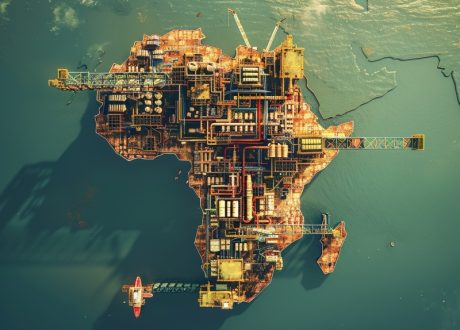
Report highlights 2 Egyptian projects among major clean energy ventures in N.Africa
A report by Energy Capital & Power highlighted two Egyptian projects – Suez Wind Power ...

CEO of the Egyptian Space Agency (EgSA) Sherif Sedky said the EgyptSat 2 (or Misr-Sat 2) – due to be launched in October 2023 from China – will contribute to achieving several Sustainable Development Goals (SDGs).
The main mission of EgyptSat 2 is to take images of Egyptian soil to help preserve the environment and serve research purposes.
Capable of providing imagery with a ground resolution of 2 meters, the satellite is designed to optimize the country’s resources by using it for innumerable purposes, such as identifying suitable crops based on soil nature and climate conditions, urban planning, monitoring coastline changes, and tracking water sources and river courses.
The satellite is expected to play a pivotal role in agricultural and economic development.
During a meeting with Prime Minister Moustafa Madbouli on Tuesday, Sedky highlighted the great experience which the Egyptian team acquired while working with Chinese experts in designing, testing and assembling of the satellite.
He added that the Egyptian team managed to develop a local component of a test communications unit, noting that Egyptian cadres will participate in the launch of the satellite in China.
The satellite was implemented in collaboration with the China Aerospace Science and Technology Corporation (CASC) as China has provided Egypt a grant of $92 million for the project.
Egypt and China joined hands for EgyptSat 2:
During a ceremony marking the assembly and testing of the satellite in Egypt in June 2023, Chinese Ambassador to Egypt Liao Liqiang said Egypt is the first country to collaborate with China in a satellite manufacturing project, therefore Egypt can turn into a regional hub for the industry.
The satellite was assembled and tested at the Satellite Assembly, Integration and Test Center (AITC) of the EgSA.
The center is the largest in the Middle East and this will help localizing satellites technology in Egypt.
Sedky said that the SgSA’s plan to launch many satellites aims for reinforcing Egypt’s pioneering role in the field of space technology and sciences in Africa in addition to activating the role of the African Space Agency through the participation of various African countries in a space project serving the 2063 Africa Development Agenda.
It is worth mentioning that Egypt launched its second remote-sensing satellite Horus 2 in March 2023 from China.
Horus-2 satellite is meant to promote Egypt’s 2030 vision for sustainable development as it contributes to better understanding of the surrounding environment in order to magnify the benefit of natural resources and attain the Sustainable Development Goals.
Horus-2, which is part of remote sensing satellites, carries high-resolution imaging cameras on board to secure meticulous information about mineral wealth in addition to studying climate conditions.
It also helps recognize the best crops to be planted in Egypt and the best places for this in order to realize self-sufficiency of food and export the surplus.
Egypt is exerting great efforts to develop the space industry with the aim of attaining the Sustainable Development Goals.
A report by Energy Capital & Power highlighted two Egyptian projects – Suez Wind Power ...
The opening concert of the Annual Meeting 2025 in Davos-Klosters will address the pressing issues ...
Juhayna Food Industries proudly announced that its agricultural arm, El Enmaa for Agricultural Development, has ...


اترك تعليقا